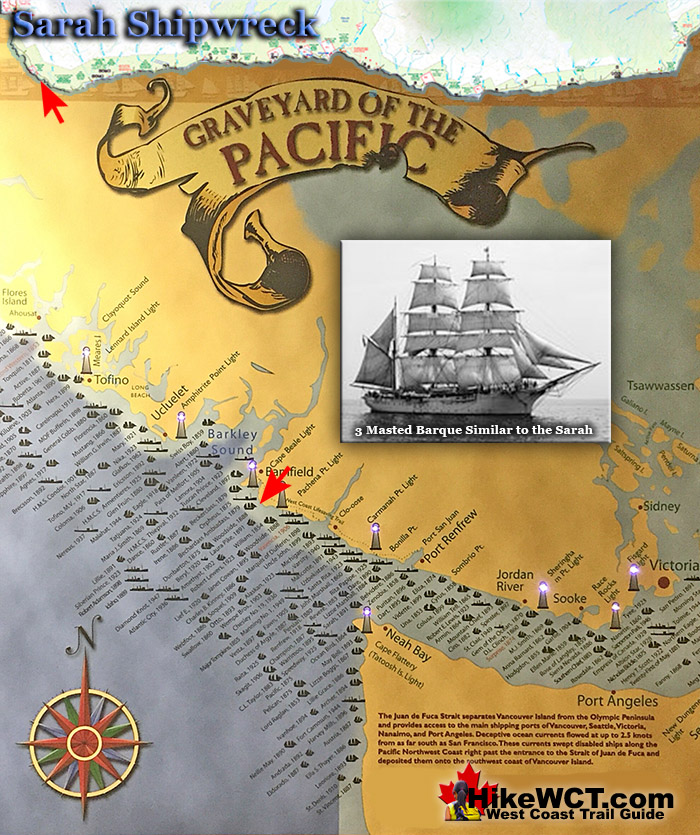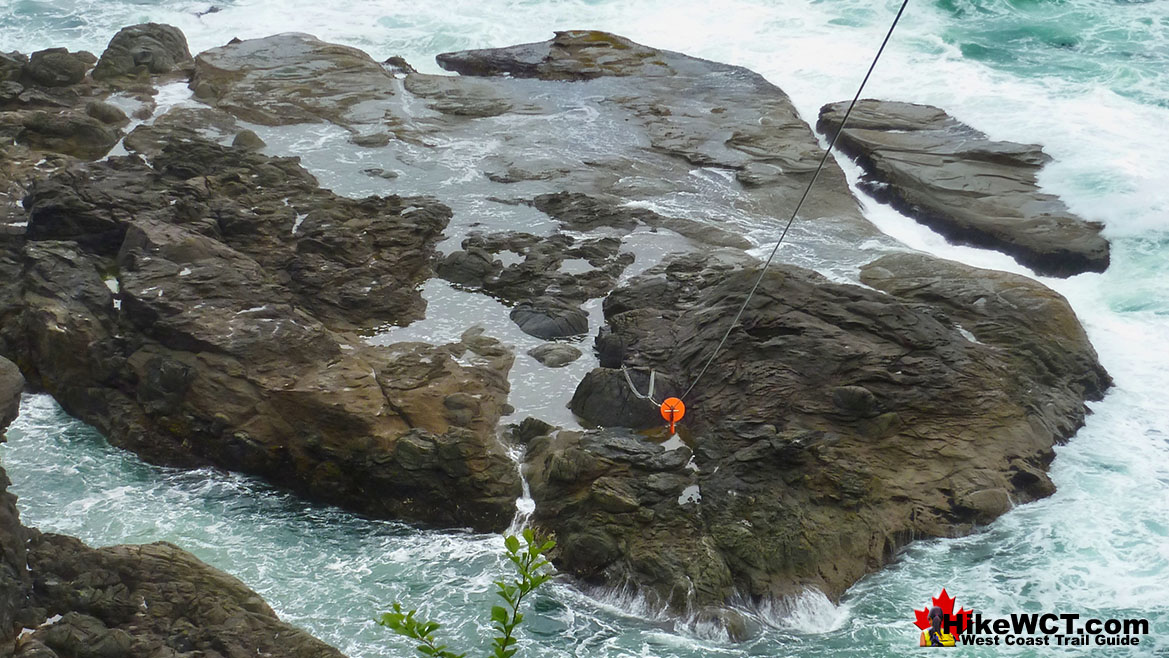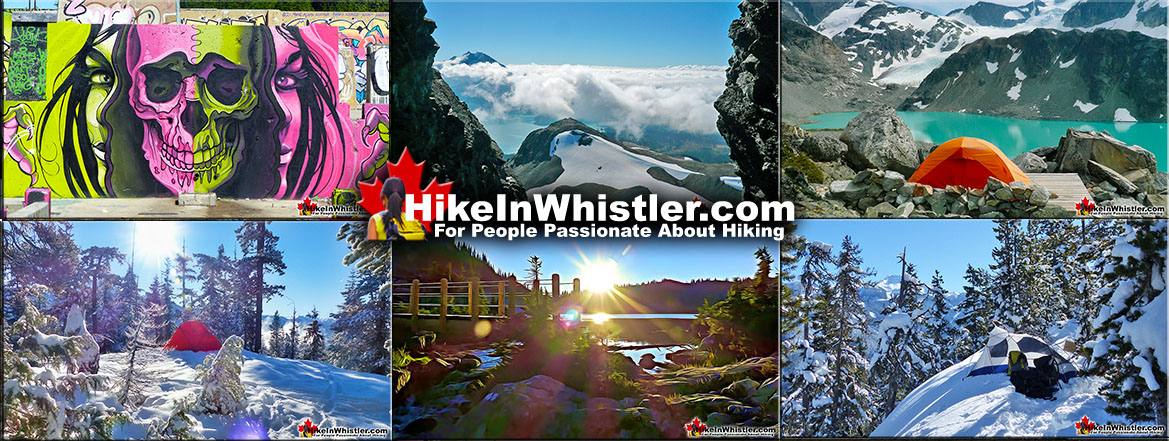![]() Seven kilometres into the West Coast Trail you will come to the shipwreck of the Sarah, hidden under the waves near the shoreline route of the trail. The Sarah was a three masted barque of 1206 tons, built in Nova Scotia in 1874. A British ship, she was sailing from the Philippines in ballast(no cargo), heading for Puget Sound. The crew consisted of 18 men as well as the captain's wife and baby.
Seven kilometres into the West Coast Trail you will come to the shipwreck of the Sarah, hidden under the waves near the shoreline route of the trail. The Sarah was a three masted barque of 1206 tons, built in Nova Scotia in 1874. A British ship, she was sailing from the Philippines in ballast(no cargo), heading for Puget Sound. The crew consisted of 18 men as well as the captain's wife and baby.
 Alaskan Shipwreck at 4km
Alaskan Shipwreck at 4km Soquel Shipwreck at 5km
Soquel Shipwreck at 5km Sarah Shipwreck at 7km
Sarah Shipwreck at 7km Becherdass-Ambiadass Shipwreck at 8km
Becherdass-Ambiadass Shipwreck at 8km Michigan Shipwreck at 12km
Michigan Shipwreck at 12km Uzbekistan Shipwreck at 13.8km
Uzbekistan Shipwreck at 13.8km Varsity Shipwreck at 17.6km
Varsity Shipwreck at 17.6km Valencia Shipwreck at 18.3km
Valencia Shipwreck at 18.3km Janet Cowan Shipwreck at 19km
Janet Cowan Shipwreck at 19km Robert Lewers Shipwreck at 20km
Robert Lewers Shipwreck at 20km Woodside Shipwreck at 20.2km
Woodside Shipwreck at 20.2km Uncle John Shipwreck at 26.2km
Uncle John Shipwreck at 26.2km Vesta Shipwreck at 29km
Vesta Shipwreck at 29km  Raita Shipwreck at 33km
Raita Shipwreck at 33km  Skagit Shipwreck at 34.2km
Skagit Shipwreck at 34.2km Santa Rita Shipwreck at 37km
Santa Rita Shipwreck at 37km Dare Shipwreck at 39km
Dare Shipwreck at 39km Lizzie Marshall Shipwreck at 47km
Lizzie Marshall Shipwreck at 47km Puritan Shipwreck at 48.5km
Puritan Shipwreck at 48.5km Wempe Brothers Shipwreck at 49.4km
Wempe Brothers Shipwreck at 49.4km Duchess of Argyle Shipwreck at 58km
Duchess of Argyle Shipwreck at 58km John Marshall Shipwreck at 62.3km
John Marshall Shipwreck at 62.3km William Tell Shipwreck at 64.2km
William Tell Shipwreck at 64.2km Revere Shipwreck at 69km
Revere Shipwreck at 69km Cyrus Shipwreck at 75km
Cyrus Shipwreck at 75km
The captain of the Sarah sighted the recently built Carmanah Point Lighthouse and mistook it for the Cape Flattery Lighthouse. The Sarah struggled against the south-east wind and the ship was pushed westward. Later the crew was able to regain their eastward coarse, toward what they though was Juan de Fuca Strait. The ocean current had moved the ship considerably far north and on the evening of the 8th November, 1891, the crew was surprised to suddenly hear distant breakers. They immediately dropped anchor, then shortly after another one. But it was too late, the Sarah ran aground on the shore of what is now KM7 of the West Coast Trail. One lifeboat was freed with some of the crew, however the captain, the rest of his crew and his wife and baby remained because the second lifeboat could not be freed. Throughout the following day and night they struggled to free the boat to make their escape to safety. Two of the crew drowned in attempting to reach the shore in a makeshift raft. Finally they managed to free another lifeboat and the survivors managed to get ashore. They were rescued by one of the many indigenous tribes residing on Vancouver Island. It seems safe to assume that it was the Huu-ay-aht First Nations which resided there, as they do now, at Pachena Bay. The Huu-ay-aht brought the shipwreck survivors to a trader's post where they found passage to Victoria on a local schooner. 16 of the crew of 18 and the captain's wife and baby survived the Sarah shipwreck.
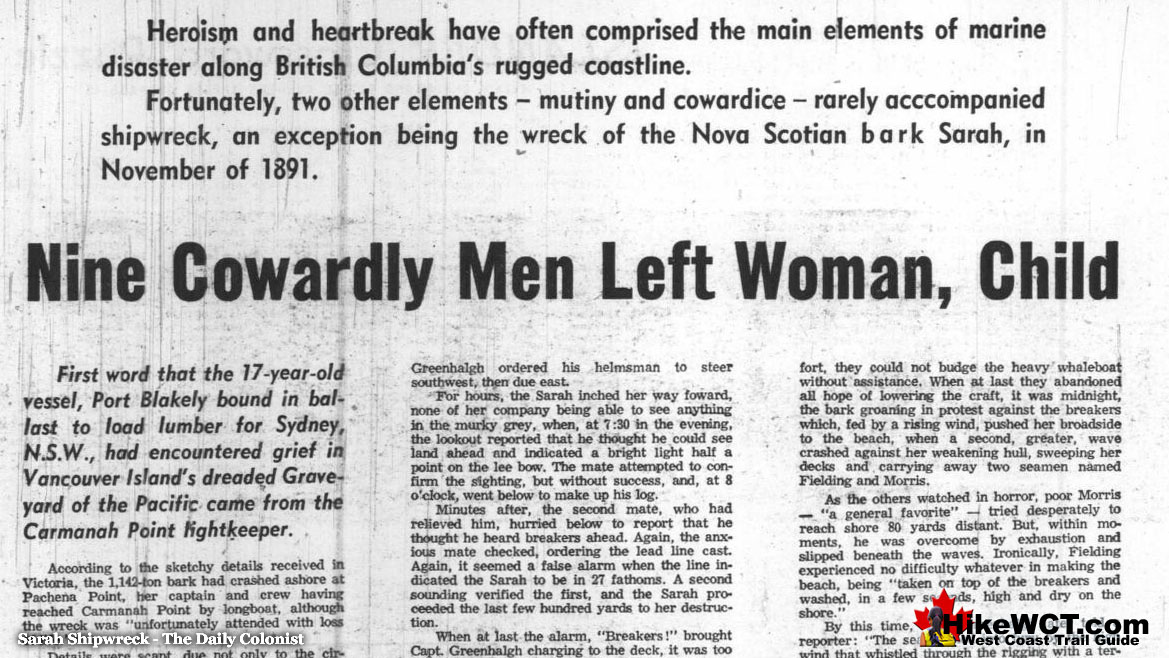
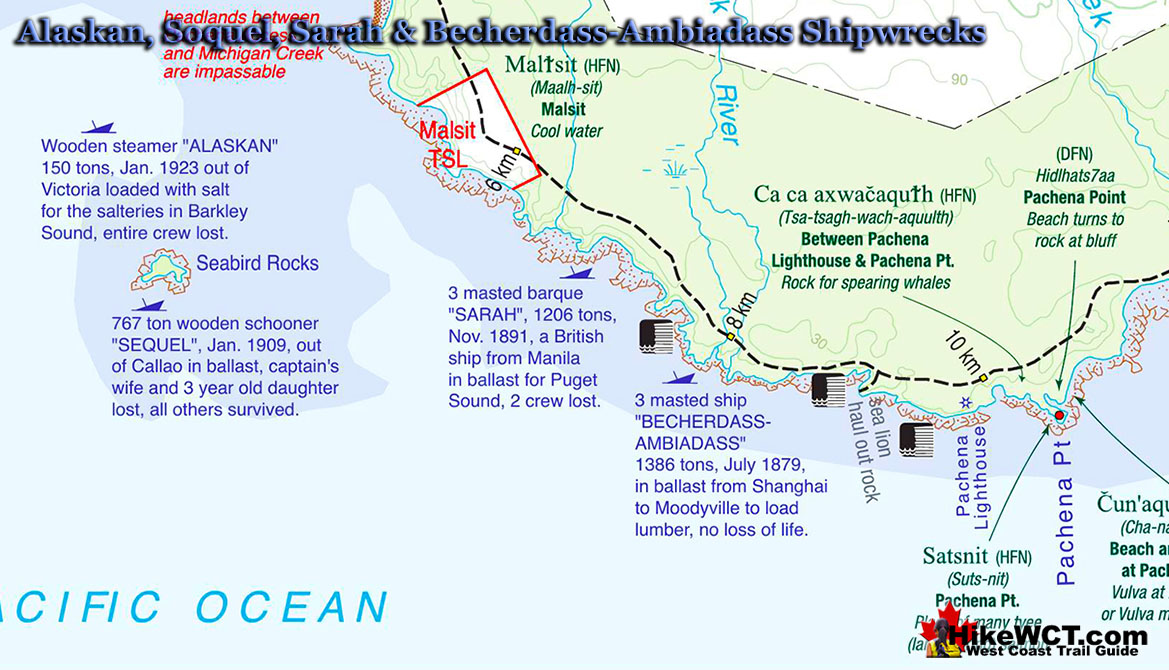
West Coast Trail Near the Sarah(KM7)
Pachena Bay to Michigan Beach 0-12km
Highlights of this section include the gorgous sandy beach at Pachena Bay, the amazing tall ladders, the dramatically beautiful rainforest with enormous, mangled trees splayed across the trail, the stunning ocean views through occasional gaps in the forest, the first of many wildlife sightings, the wonderful view of Sea Lion Haul Out Rock, the up close look at Pachena Point Lighthouse and the first visible shipwreck at Michigan Beach.
West Coast Trail Best Sights: Tall Ladders!
Tall ladders appear right from the start of the West Coast Trail as you immediately find out that the the official 75km length of the trail doesn't factor in the distance you will be covering up and down, or for that matter the constant zig-zagging through the rainforest.
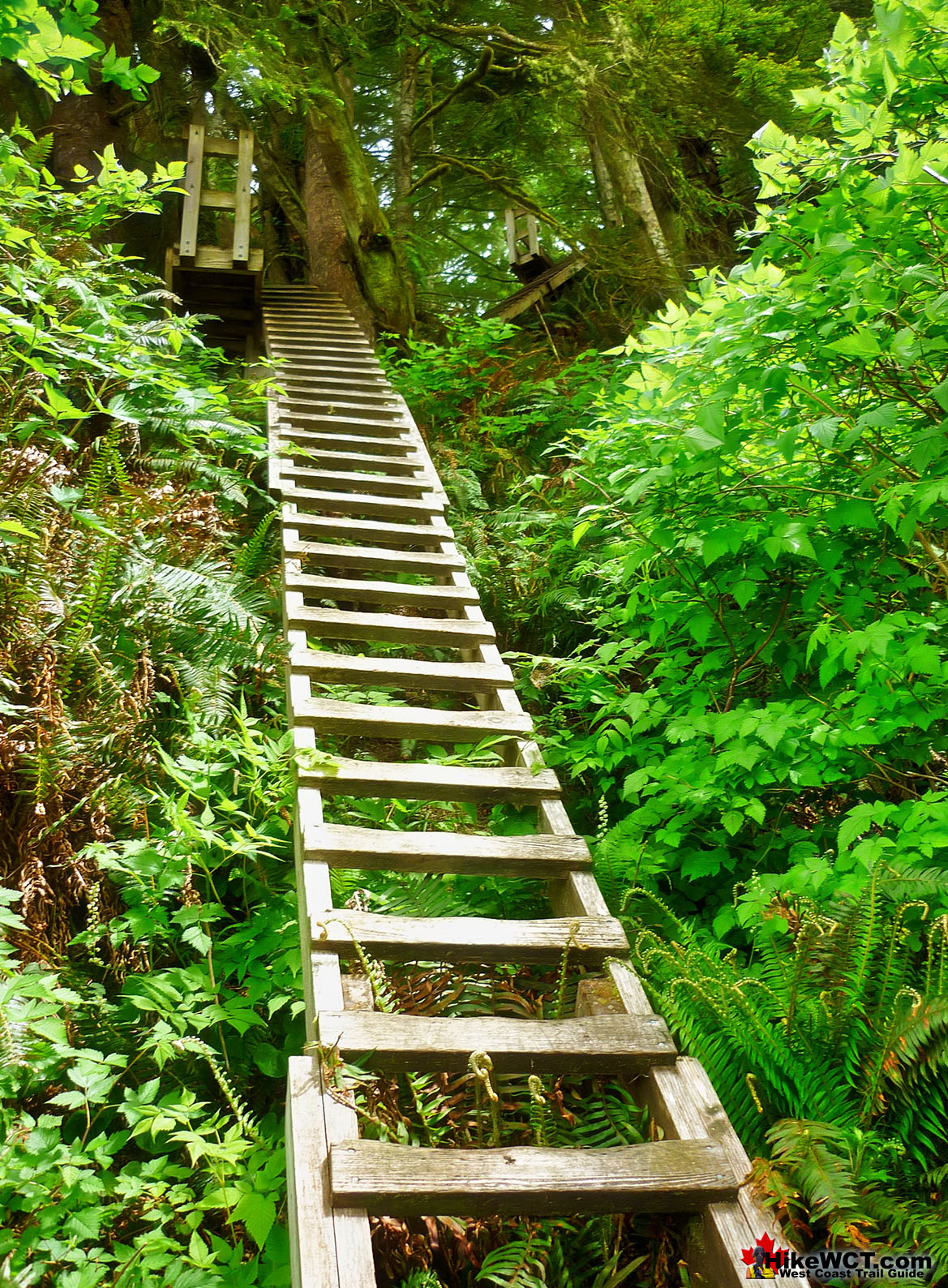
West Coast Trail Best Sights: Spectacular Deadfall
The incredible spectacle and variety of deadfall you encounter on the West Coast Trail is amazing. Winter storms cause enormous trees to crash down over the trail and each one is remarkably different and beautiful. Trees ripped apart, snapped in half or toppled from their roots lay across the trail and make quite a spectacle showing the savage beauty of a West Coast rainforest.
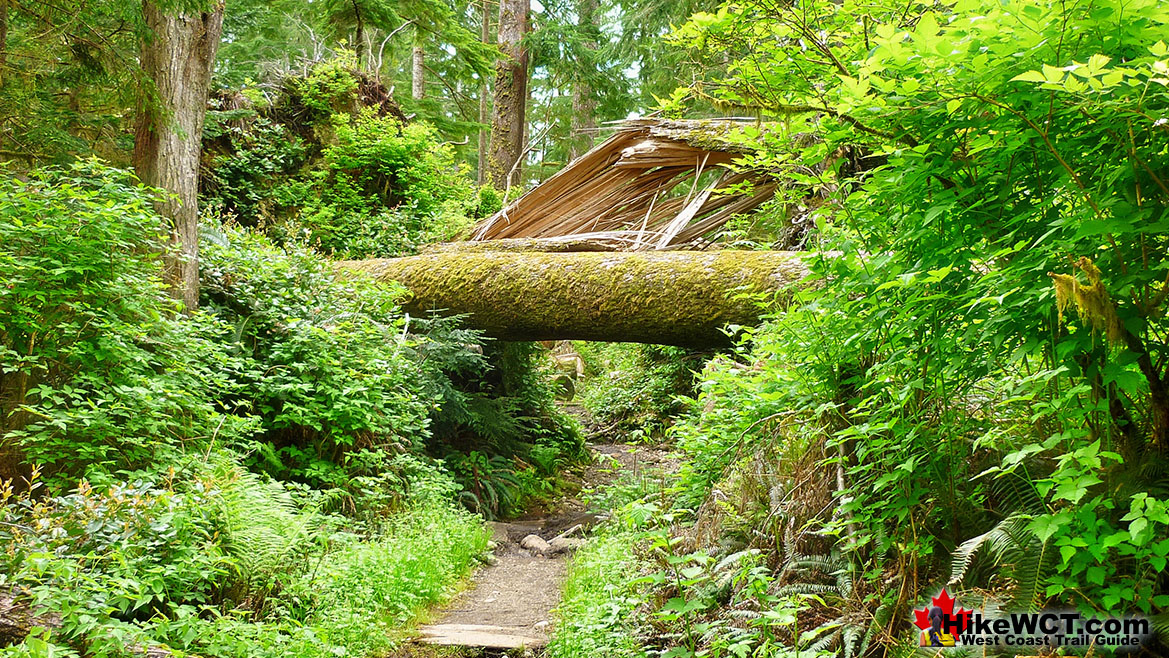
West Coast Trail Best Sights: Sea Lion Haul Out Rock
Sea Lion Haul Out Rock appears through the trees 9.5km from the Pachena trailhead. You get a towering view of the huge reef that they call home for part of the year. Steller sea lions are amphibious and can comfortably exist in water or on land. When in water they tend to be in search of food and haul out onto land to mate, raise their pups, molt and rest. Sea Lion Haul Out Rock is exactly the type of haul out location they look for. This location is easy to access, remote, inaccessible by land predators such as bears and ocean predators such as killer whales. This location also provides a constant cool wind which is necessary to thermoregulate their bodies which are adapted to withstand living in cold water.
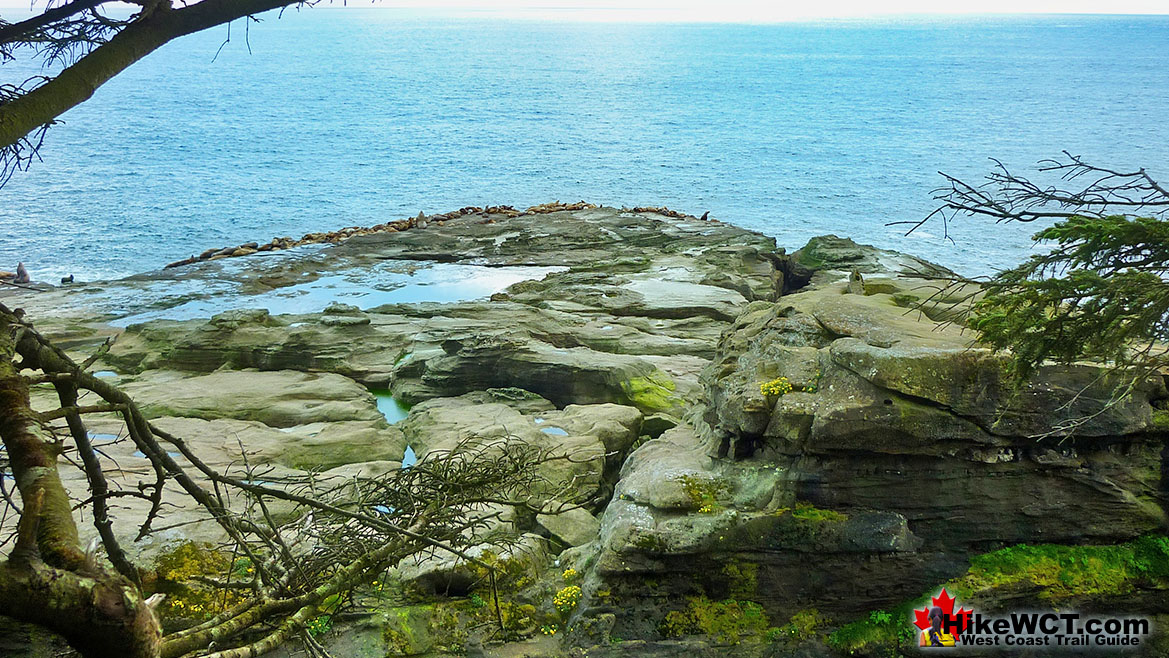
West Coast Trail Best Sights: Pachena Point Lighthouse
The Pachena Point Lighthouse is a great sight along the West Coast Trail just past Sea Lion Haul Out Rock. You can wander around the actual lighthouse and get a look at the view from high above the ocean. You can't go in the lighthouse, but it is still well worth the short side trail to get there. At the edge of the cliff a cable extends down to an island reef surrounded by churning waves. This is used to transport things up and down from the reef if the ocean is calm enough for a boat to pull into that little gap under the cable to attach a line to pull freight up.
Pachena Point was originally named Beghadoss Point after the Becherdass-Ambiadass shipwreck that occurred here on July 27th, 1879. The name Beghadoss was the original name of the Becherdass-Ambiadass. When the lighthouse was completed in 1907 the name of the point and lighthouse were changed to Pachena Point and Pachena Point Lighthouse. The name is thought to come from the word pacheenah. A word that the Indigenous hunters along the coast used for seafoam. It is also reported that Pachena was easier for Canadians to pronounce than Beghadoss. It is a stark reminder to how treacherous the Graveyard of the Pacific is here, that despite the newly constructed lighthouse, shipwrecks continued to occur in the area. The Soquel wrecked near here in 1909, the Varsity in 1940 and the Uzbekistan in 1943!
West Coast Trail Best Sights: Michigan Shipwreck!
In the midst of the reef in front of Michigan Beach, the first campsite along the West Coast Trail, you encounter the boiler of the Michigan shipwreck! This huge rusting hulk has been here since the Michigan wrecked here in 1893.
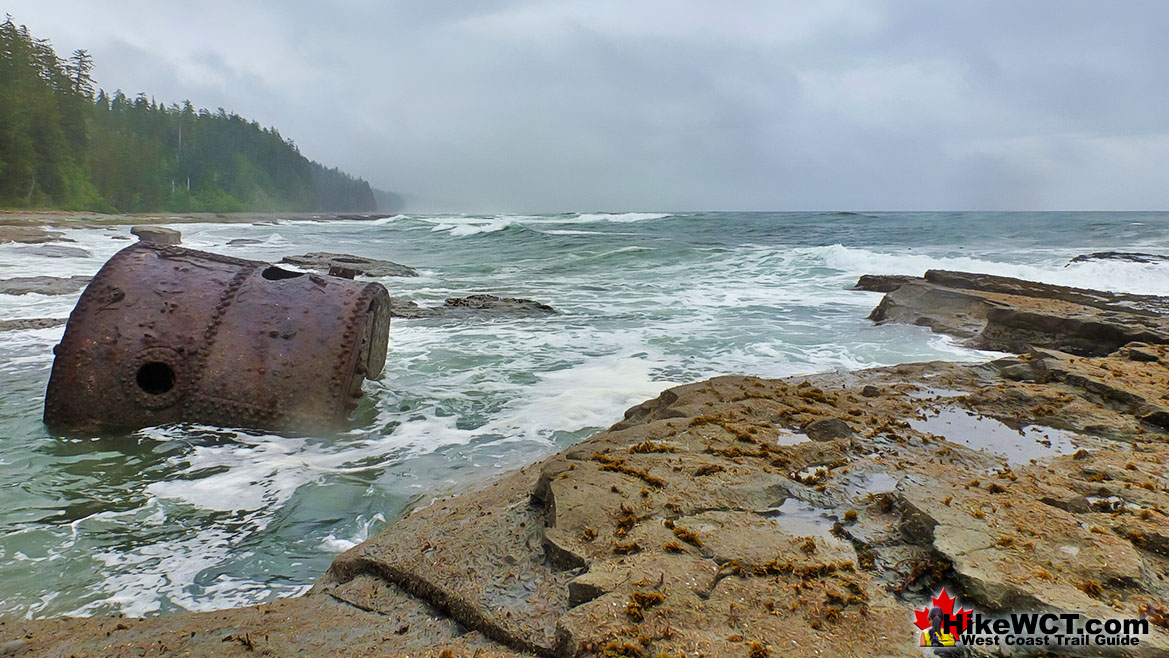
The Michigan shipwreck continued here...
Campsites Near the Sarah (KM7)
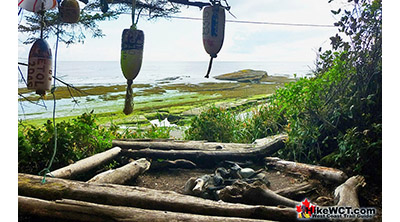 KM12: Michigan Creek Campsite
KM12: Michigan Creek Campsite
The campsite at Michigan Creek is the first or last campsite you will encounter on the West Coast Trail. First, if you start at the Pachena trailhead(hiking south) and last if you begin at the Gordon River trailhead(hiking north). The 12.1 kilometres(7.5 miles) between the Pachena trailhead and Michigan Creek is fairly easy and flat. Compared to the rest of the West Coast Trail, this section is wonderfully relaxing. Michigan Beach is not terribly pretty, though the Michigan shipwreck boiler is quite a sight. The campsite is busy and the next three campsites, Darling River, Orange Juice Creek and Tsocowis Creek are all nicer and quieter. Michigan Creek campsite continued here...
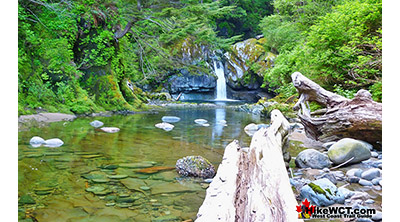 KM14: Darling River Campsite
KM14: Darling River Campsite
The second, or second to last campsite on the West Coast Trail is at Darling River. Located just 1.6 kilometres(1 mile) from Michigan Creek, the Darling River campsite has an alright, sandy beach and a truly wonderful waterfall. Darling Falls pour into a stunning, emerald coloured pool nestled against a short cliff. The falls only drop about three or four metres as they fill the pool at the base and flowing down to the ocean in an ever-narrowing torrent of water. The campsite at Darling River is the best along this stretch of the West Coast Trail because of the beautiful falls and river, as well as being far less busy than the Michigan Creek campsite. Darling River campsite continued here...
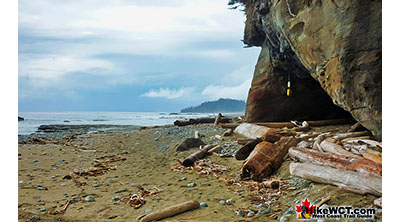 KM15: Orange Juice Creek Campsite
KM15: Orange Juice Creek Campsite
Just a kilometre past the Darling River campsite you will come to another beach campsite at Orange Juice Creek. Orange Juice Creek is not terribly pretty and gets its name from the intensely, orange juice coloured water that crashes through a tangled morass of driftwood logs. If you aren't keen on swimming and/or washing at Darling Falls, Orange Juice Creek is a good alternative. Orange Juice Creek is the third(or third to last) campsite on the West Coast Trail. Michigan Creek, Darling River, Orange Juice Creek and Tsocowis Creek are all along a fairly continuous beach that stretches for 5 kilometres. All are easily within a days hike from or to the Pachena trailhead. Orange Juice Creek campsite continued here...
West Coast Trail Shipwreck Books
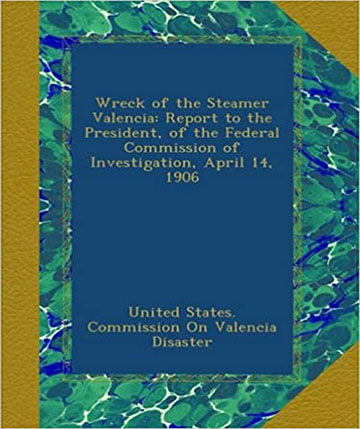
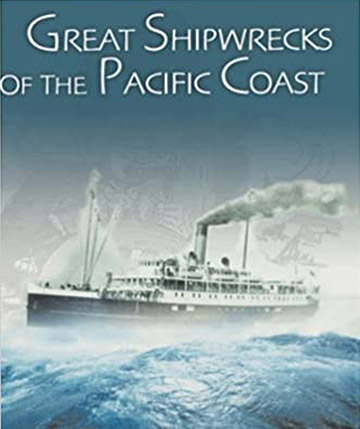
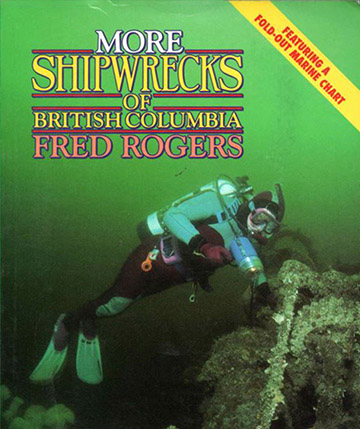
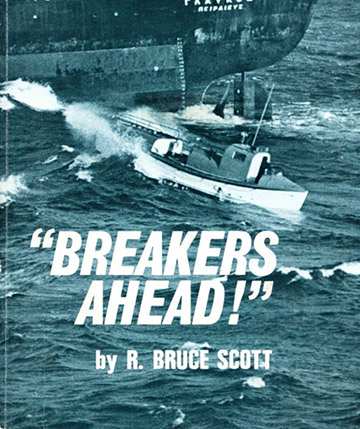
West Coast Trail A to Z
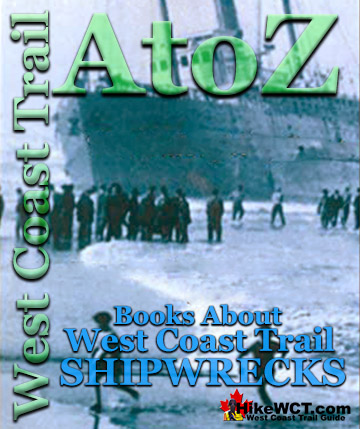
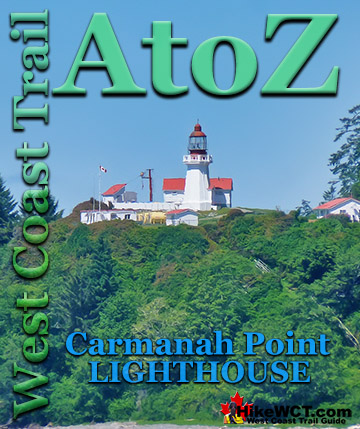
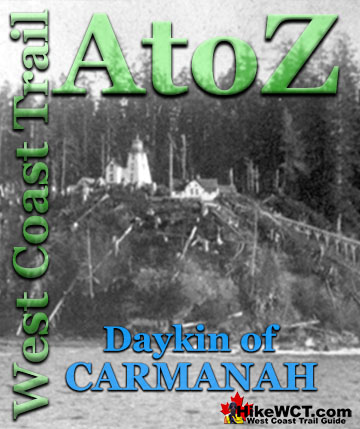
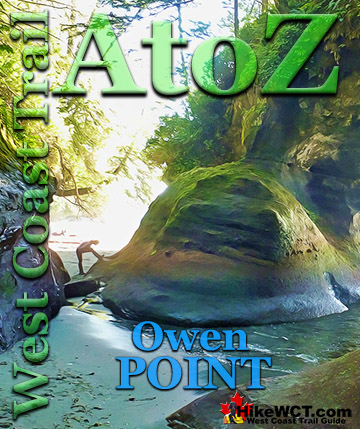
The West Coast Trail by Day
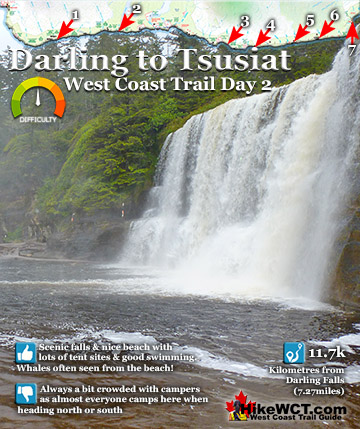
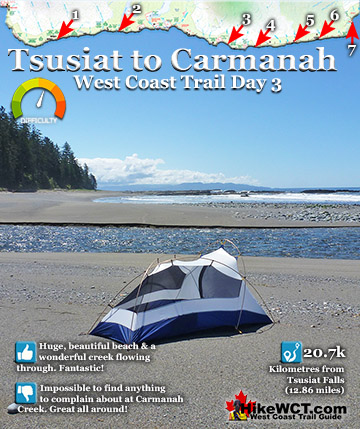
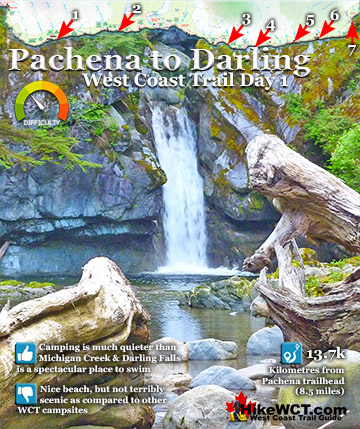
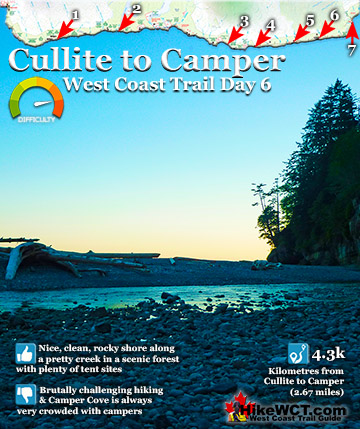
Explore BC Hiking Destinations!
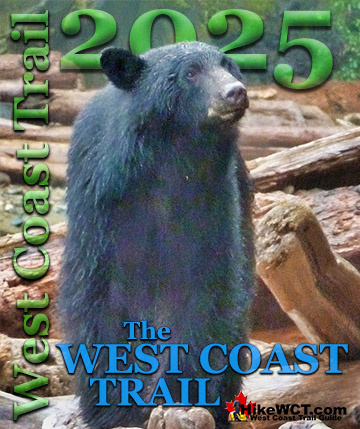
The West Coast Trail

Victoria Hiking Trails

Clayoquot Hiking Trails

Whistler Hiking Trails
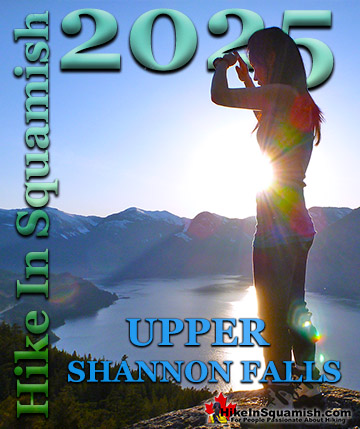
Squamish Hiking Trails

Vancouver Hiking Trails

